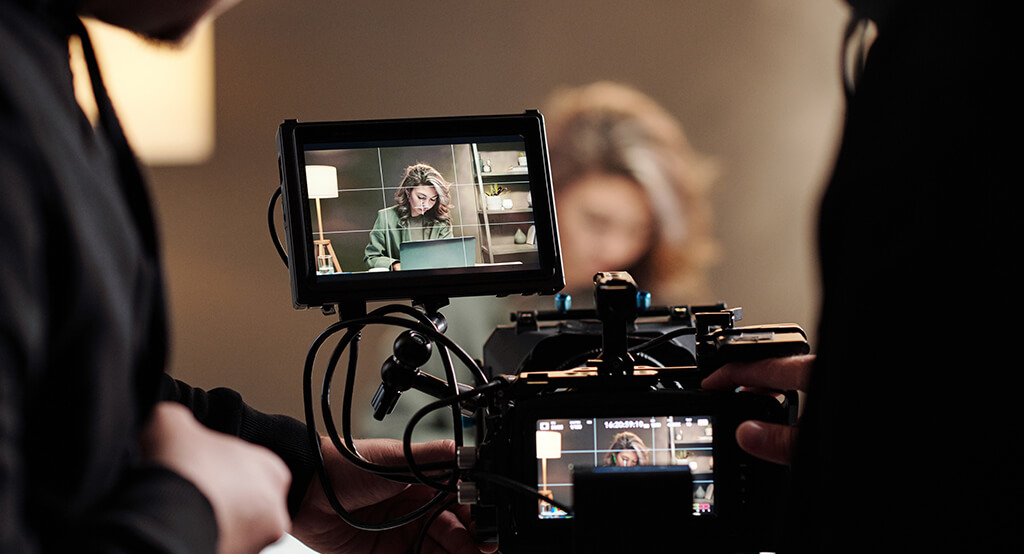
If you’re about to dive into creating a video—whether it’s a brand promo, explainer, event recap or social content—there’s one thing you absolutely can’t skip: planning. It’s tempting to grab a camera and start shooting, but without a proper plan, things can quickly spiral out of control. Wasted time, budget overruns, missed shots—it all adds up.
Planning isn’t just about logistics—it’s about clarity. When you plan properly, you make better creative decisions, avoid last-minute stress, and give your video a real chance to deliver results. It gives structure to your ideas and helps align everyone involved—from clients and stakeholders to your production crew.
So, let’s walk through the full video production planning process step by step. Whether you’re a seasoned creative or a first-timer, this guide will help you keep everything on track and running smoothly from idea to final delivery. By the end, you’ll have a clear roadmap that takes you from a blank page to a polished, professional video—without the guesswork.
1. Nail Down the Objective
Before you do anything else, ask yourself: Why are we making this video? Be specific. Are you promoting a product, building brand awareness, educating your audience, or maybe driving sales?
Your objective will shape everything—your script, style, length, tone, and where the video ends up (social, website, email, etc.). So don’t rush this bit. Get everyone aligned on the goal from day one.
A clearly defined objective acts as a compass. It keeps the whole project focused and ensures every decision you make supports that goal. Without it, your video risks becoming vague or directionless. When you know exactly what you’re trying to achieve, it’s far easier to measure whether the video actually works. For example, if the goal is lead generation, then you’ll know to include a strong call to action, a landing page link, and maybe even a promo code. On the other hand, if the goal is brand awareness, you’ll focus more on storytelling, emotion, and visuals that stick.
Top tip: Try to link your objective to a measurable outcome. For example, “increase website signups by 20%” or “generate 50 qualified leads.” Numbers keep things real and give you something to assess performance against after the video goes live.
2. Know Your Audience

Once you’ve got your objective, think about who you’re talking to. What do they care about? What kind of content do they respond to? What tone will resonate with them—formal and professional, or fun and relaxed?
Build a simple profile of your ideal viewer. It doesn’t have to be a deep dive, but knowing who you’re speaking to helps shape your creative decisions. The clearer your audience, the sharper your message.
Try asking yourself a few key questions: What age group are they in? What’s their job or role? What challenges are they facing? What social platforms do they use? Even understanding the time of day they might watch your video can influence your creative approach. For instance, a busy professional scrolling LinkedIn during lunch might respond best to a short, straight-talking explainer, while a Gen Z user on TikTok might want quick edits and humour.
Also think about their emotional state—do they want to feel inspired, informed, reassured, or entertained? Aligning your tone and content with their expectations helps you connect on a deeper level and makes your message far more effective.
A video that feels personal and relevant will always perform better than one that’s generic. So don’t skip this part—it’s where real engagement begins.
3. Define the Core Message
Now it’s time to pin down the heart of your video. What’s the one thing you want viewers to remember or feel after watching? Your core message should be short, punchy and easy to grasp.
Everything in the video should point back to this. Don’t overload your script with multiple messages—keep it tight. One clear message always beats five scattered ones.
Think of your core message as the North Star for your entire production. It doesn’t just guide the script—it influences your visuals, music, voiceover, and even your call to action. When your core message is strong, the entire video feels coherent and purposeful. It gives your audience a takeaway—something that sticks in their minds and prompts them to act.
Try boiling your message down to one sentence. For example, “This product saves time and simplifies your workflow” or “Our service takes the stress out of home buying.” Then build your story around that sentence. You can always add supporting points, but they should all reinforce your main idea—not compete with it.
Simplicity is power. If you confuse viewers or throw too much at them, they’ll switch off. Get to the point, stay on it, and drive it home with clarity and conviction.
4. Decide on the Format and Style
Not all videos are created equal. Once you know your audience and message, choose the format that suits them best. Here are a few common types:
Live-action interviews – Great for testimonials or case studies.
They add authenticity and help build trust by showcasing real people and genuine experiences.
Animated explainers – Ideal for breaking down complex ideas.
With visuals that simplify information, they’re perfect for introducing products, services, or processes.
Product demos – Perfect for showing features in action.
They let viewers see exactly how something works, helping them make confident buying decisions.
Social snippets – Short, snappy and designed for sharing.
These are attention-grabbers built for fast scrolling, often with bold text and punchy visuals.
Choosing the right format sets the tone for the entire project. A formal interview setup might require a studio, multiple cameras and good lighting, while a fast-paced TikTok-style clip could be filmed on a smartphone in a single afternoon. The key is to match the format to your content and, more importantly, to your audience’s expectations.
Then think about the style—should it be sleek and corporate, playful and colourful, or cinematic and emotional? Your choice will affect everything from set design and costume to music and colour grading. A consistent visual style builds trust and keeps the audience engaged. It’s also worth considering how your chosen style fits within your brand’s identity—does it complement your website, logo and tone of voice?
Choosing both format and style early on helps align your team and streamline decisions later in the process, from shooting to editing.
5. Write the Script

This is where your video really starts to take shape. A good script is concise, engaging and always keeps the viewer in mind. Don’t try to write like Shakespeare—speak naturally. Write how people talk.
Make sure your script has a clear structure:
Hook – Grab attention in the first few seconds.
This could be a bold statement, a question, or an eye-catching visual—anything that makes someone stop scrolling.
Body – Deliver the core message with supporting info.
Keep it clear and focused, using examples or visuals to reinforce your point without overwhelming the viewer.
Call to action – Tell the viewer what to do next.
Whether it’s visiting your website, signing up, or making a purchase, make the next step simple and obvious.
When scripting, always consider pacing and clarity. Most people have short attention spans, so you’ve got to make every second count. Keep sentences short and impactful. Avoid jargon unless you’re sure your audience will understand it, and break down complex ideas into digestible pieces.
It’s also helpful to write with visuals in mind. Think about what the viewer will be seeing as they hear each line. That might mean leaving space for a pause while a key graphic appears, or writing action into the dialogue to tie audio and visuals together.
Bonus tip: Read your script out loud. If it sounds clunky or robotic, it’ll come across that way on screen too. Better still, get someone unfamiliar with the project to read it—it’s a great way to test for flow and comprehension. A well-written script is the backbone of a great video, so don’t rush it.
6. Storyboard the Visuals
Once your script is sorted, start visualising it. A storyboard is a scene-by-scene breakdown that maps out how the video will look. You don’t need to be a great artist—stick figures are fine—as long as it helps everyone see the flow.
Storyboarding is essential if you’re filming multiple scenes, locations or setups. It saves time on set and helps avoid costly mistakes. You’ll be able to plan your camera angles, transitions, props, costumes and more. It also gives your team—from the camera crew to the editor—a clear understanding of how each scene should be captured and assembled.
If you’re working with animation, the storyboard becomes even more important. Animators rely on it to plan timing, movements and scene composition. For live-action, it ensures continuity, especially if filming stretches across multiple days or locations.
Use arrows, notes, and scene descriptions to give context, and pair the visuals with the relevant lines from the script. This creates a frame-by-frame blueprint that guides production and helps ensure the final video looks just like you imagined it. Don’t skip this step—it’s the visual glue that holds your entire project together.
7. Plan the Production Logistics
This is the gritty part of video production—the nuts and bolts that keep things running smoothly. Here’s what you’ll need to think about:
- Location – Where are you shooting? Do you need permits?
- Cast – Are you using actors, real customers, or staff?
- Crew – Who’s filming, directing, lighting, editing?
- Equipment – Cameras, lights, mics, tripods, etc.
- Schedule – Create a shooting schedule and call sheet.
- Budget – Track all costs (including post-production).
The more detailed your plan, the less you’ll have to worry about when the cameras start rolling.
This is where preparation makes or breaks a shoot. Book your locations well in advance, and always have a backup in case things fall through. If you’re filming outdoors, monitor the weather forecast and plan accordingly. For your cast, consider comfort and communication—provide call times, scripts, and directions. A clear brief for everyone on set avoids delays and confusion.
Your production schedule should be broken down by time slots and tasks—who’s needed when and where, what’s being filmed, and how long it should take. A well-prepared call sheet ensures everyone knows their role and timing.
Lastly, never underestimate the importance of contingency planning. Always budget for overages—extra batteries, backup equipment, unexpected overtime. Things go wrong; your job is to be ready when they do.
8. Shoot the Video

Now it’s time to bring it all to life. On the day of the shoot, stick to your schedule but stay flexible. Things don’t always go to plan—weather changes, people run late, tech fails. Stay calm and adapt.
If you’re working with a crew, communication is key. Make sure everyone knows their role, and keep checking the footage as you go. It’s better to reshoot a scene on the day than realise it’s unusable in post.
Preparation on shoot day is everything. Arrive early to set up, test your gear, and walk through the location. Double-check your lighting, sound levels, framing, and background. Have your storyboard and shot list printed and ready—it’s your checklist for the day.
Create a relaxed but professional atmosphere, especially if you’re filming people who aren’t used to being on camera. Encourage them, give clear directions, and allow for multiple takes. Sometimes the best moments happen when people loosen up.
Throughout the day, review your footage often. Watch playback with sound to check for background noise or visual distractions. If something feels off, don’t be afraid to pause and fix it. It’s always cheaper to correct it on the spot than to fix it in post-production later.
9. Edit and Polish
With all your footage captured, move into post-production. This is where everything comes together: visuals, sound, graphics, music, and transitions.
Here’s what to focus on:
Pacing – Keep it tight and engaging.
Avoid lingering too long on any single shot—keep things moving to maintain viewer interest. Quick cuts and purposeful transitions can help retain attention, especially on fast-scrolling platforms.
Sound – Use clean audio, sound effects, and background music.
Poor sound quality can ruin even the best visuals, so invest in good microphones and mix your audio carefully. Choose music that fits the tone of your message and doesn’t distract from the dialogue or voiceover.
Graphics – Add titles, captions, logos and animations as needed.
These visual elements help reinforce key points and make your video feel more polished. Just be careful not to overdo it—too many on-screen effects can overwhelm your viewer.
Branding – Make sure your brand identity is clear and consistent.
Use your brand’s colours, fonts, and tone throughout the video to strengthen recognition. Subtle touches—like an intro animation or watermark—can go a long way in building familiarity.
Subtitles – Always add them. Most people watch with the sound off.
They also improve accessibility for deaf and hard-of-hearing viewers, and help in noisy environments. Make sure your subtitles are synced well and easy to read across devices.
If your video’s going online, create different versions for different platforms. A 90-second version for the website, 30 seconds for Instagram, and a 6-second bumper for YouTube, for example.
Don’t rush editing—this is where a good video becomes a great one. Watch your rough cut several times. Does it flow naturally? Are transitions smooth? Are there any awkward pauses or distracting elements?
Pay close attention to colour grading and audio mixing—these subtle tweaks can make your video look polished and professional. Choose music that complements your message without overpowering it, and ensure the call to action is strong and clear.
Once the final cut is ready, test it. Show it to a few people who weren’t involved in the project. Fresh eyes catch things you might miss. Their feedback can be the difference between a video that simply “works” and one that truly lands.
10. Distribute Strategically
Don’t just upload your video and hope for the best—have a proper plan. Choose the right platforms based on where your audience spends their time. LinkedIn might work well for B2B content, Instagram Reels for younger audiences, and YouTube for in-depth explainers. Tailor your content for each platform. That means tweaking your aspect ratio, adjusting length, and crafting different captions or thumbnails.
Timing is crucial too. Schedule your release when your audience is most active—weekday mornings for professionals, evenings or weekends for consumers. Write compelling captions that spark curiosity or clearly state the value of the video. Use relevant hashtags to boost discoverability, and consider tagging collaborators, customers, or partners to widen reach.
Email marketing can also play a part. Share your video with your mailing list, and don’t forget to embed it on landing pages or blogs. If the video is part of a campaign, invest in paid promotion—YouTube pre-rolls, Meta ads, or even Google Display campaigns.
And once it’s live, track performance closely. Don’t just count views. Look at retention rates, shares, click-throughs, and conversions. This data helps you learn what worked, what didn’t, and how to optimise your next video for even better results.
Final Thoughts
Planning a video production from start to finish isn’t just about ticking boxes—it’s about setting yourself up for success. When you take the time to do it right, everything becomes easier, smoother, and more effective.
The truth is, great videos rarely happen by accident. They’re built on clear goals, smart creative choices, and thoughtful planning. Whether you’re producing content in-house or working with a video agency, these steps help you stay in control and avoid common pitfalls—from missed shots to bloated budgets.
Remember: your goal is not just to make something that looks good. It’s to create something that connects, communicates, and drives action. So don’t skip steps, don’t wing it, and don’t assume editing can fix everything after the fact.
Every successful video starts with a strong foundation—understanding your audience, nailing the message, and crafting a plan to bring it to life. Combine that with sharp visuals, a smooth production, and a smart distribution strategy, and you’ve got a recipe for something that does more than just fill space—it performs. And if you’d like a free strategy consultation to help plan your next video production, feel free to get in touch with us here at Spiel—we’re here to help you make it happen.

